Are you a foodie on a quest for the ultimate culinary adventure? Pack your bags and grab your passport because Spain is calling! From sizzling paellas to tantalizing tapas, this vibrant country offers a feast for the senses like no other. In this guide, we’ll take you on a mouthwatering journey through ten incredible Spanish food capitals that every food-loving traveler must visit.
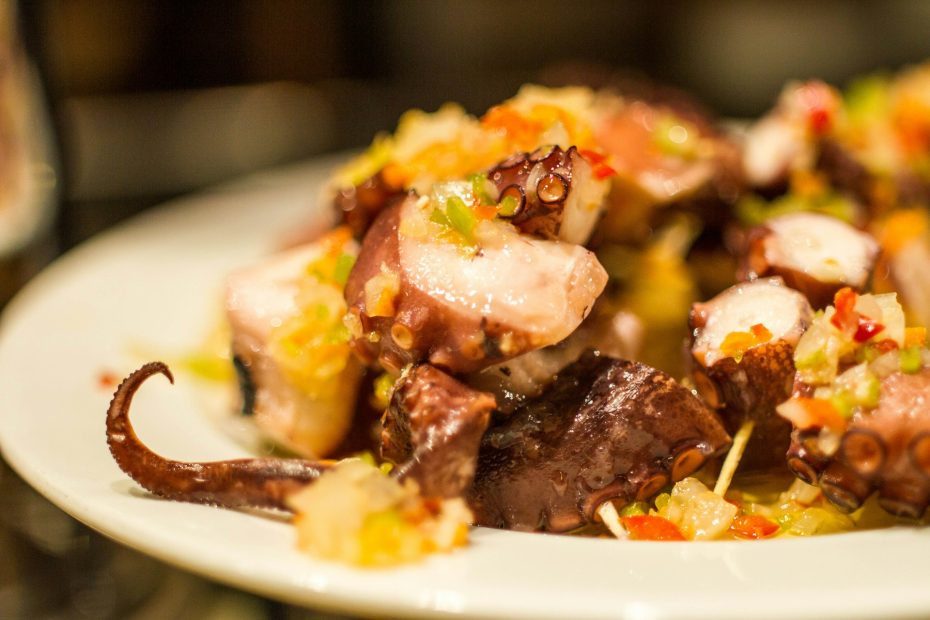
Get ready to explore buzzing markets, discover hidden gems, and taste the best of traditional and modern Spanish cuisine. ¡Buen provecho!
10 Must-Visit Spanish Cities for Foodies
1. Girona
Located in northeastern Catalonia, Girona is renowned for its unique culinary profile that blends traditional Catalan flavors. This city has gained fame as a Spanish food capital due to its remarkable restaurants and a strong tradition of excellent local produce. Girona’s culinary excellence grew exponentially when El Celler de Can Roca, led by the Roca brothers, earned the title of Best Restaurant in the World in 2013 and 2015 by Restaurant magazine.

A trip to Girona is incomplete without tasting its signature dish, “suquet,” a rich seafood stew traditionally made by fishermen. Another must-try is “xuxo,” a local pastry filled with custard and sometimes chocolate.
The city’s food landscape continues to evolve with new additions like the acclaimed restaurant Normal, started by the Roca brothers in 2021, which focuses on traditional dishes with contemporary twists. The Michelin-starred establishments such as Massana and Les Cols (in nearby Olot) are testimony to Girona’s standing on the global food map.
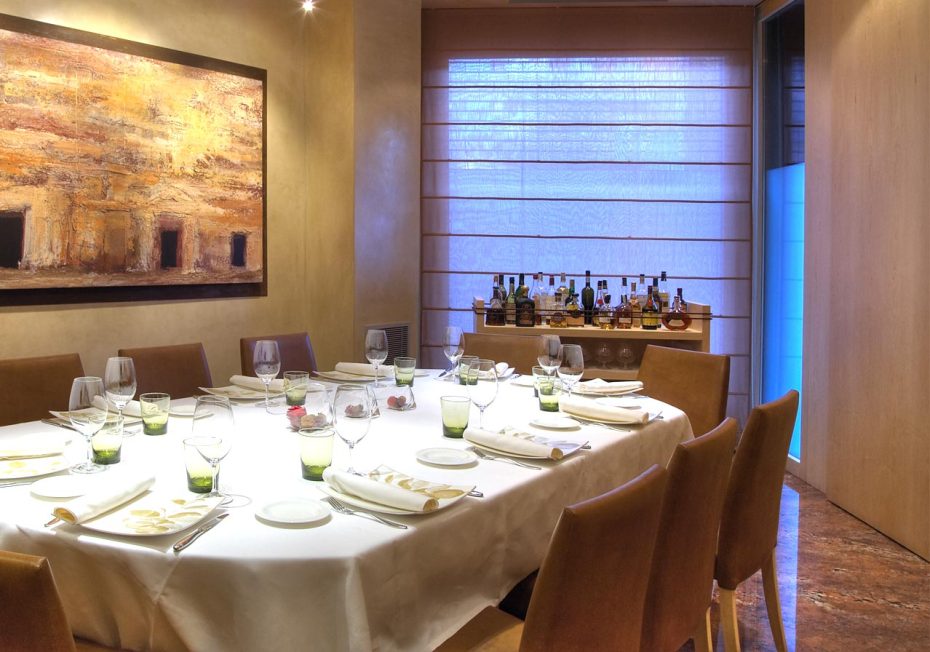
Beyond its famous restaurants, Girona offers a vibrant café culture and numerous tapas bars lining the streets of its Old Town, creating a relaxed atmosphere for dining. The Rambla de la Llibertat is a popular area to enjoy a lovely lunch or an evening meal.
Girona is accessible via high-speed train from Barcelona, which takes approximately 38 minutes. The city is also accessible by car via the AP-7 motorway or flights to Girona-Costa Brava Airport, which connects to various European destinations.
2. Vitoria-Gasteiz
Nestled in the heart of Spain’s Basque Country, Vitoria-Gasteiz stands out for its vibrant culinary scene, characterized by harmoniously blending traditional Basque flavors with innovative gastronomy. Often overshadowed by its more famous neighbors Bilbao and San Sebastián, Vitoria has steadily earned its reputation as a foodies’ haven, thanks to its many pintxos bars, bustling markets, and gourmet dining experiences.
The city’s cuisine features dishes like ‘Porrusalda’ — a warming potato and leek soup — along with ‘Goxua’, a sweet layered dessert of whipped cream, sponge cake, and caramel sauce. On the restaurant scene, Sagartoki is famous for inventive pintxos that give a modern twist to traditional flavors, while Zaldiaran boasts a cosmopolitan menu that has earned it critical acclaim and Michelin status.
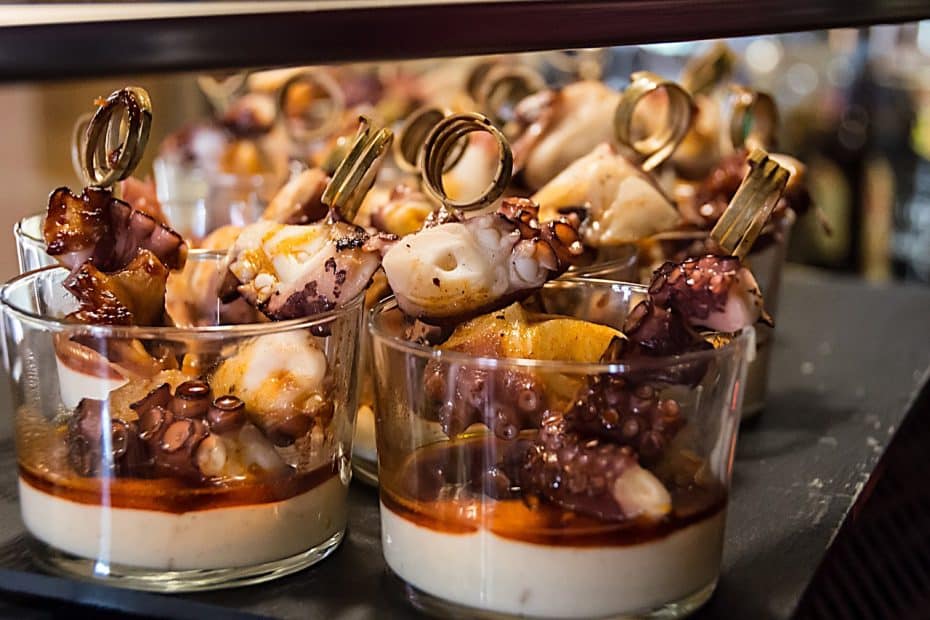
In recent years, the arrival of ‘Kromatiko,’ a restaurant guided by seasonal principles and local produce, has been a notable addition to Vitoria’s culinary landscape. Furthermore, El Portalón offers an experience steeped in history, with its building dating back to the 15th century, providing diners with authentic Basque fare.
But dining out in Vitoria doesn’t have to mean high-end gastronomy. Casual pintxo bars line Calle Dato and its surroundings. On average days, you can enjoy relaxed dining experiences, often involving sharing small plates.
For travelers interested in exploring Vitoria’s cuisine, the city is well-connected by rail through RENFE services and is accessible via Bilbao Airport, which is roughly an hour away by car or bus.
3. Madrid
We couldn’t talk about Spanish food capitals without mentioning Spain’s actual capital, Madrid!
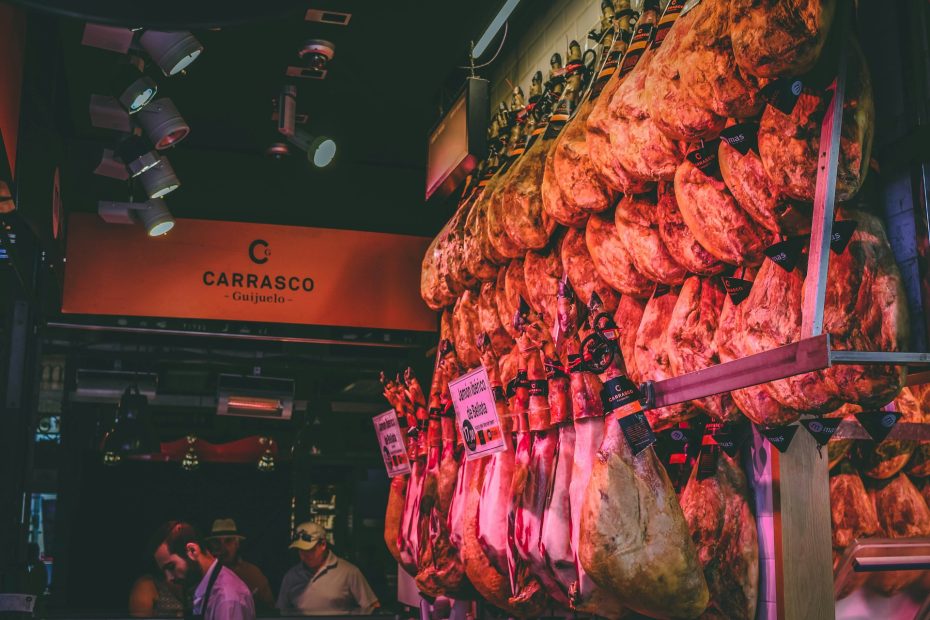
Located in the heart of Spain, Madrid is a culinary hub known for its diverse influences and vibrant food culture. The city blends traditional Spanish flavors with modern culinary innovations, making it a must-visit destination for food enthusiasts. As the Spanish capital, Madrid boasts many eateries, from tapas bars and bustling markets to high-end restaurants.
Madrid is recognized for iconic dishes such as cocido madrileño, a hearty chickpea stew with meat and vegetables; callos a la madrileña, tripe stew cooked with garbanzos and chorizo; and bocadillo de calamares, a beloved calamari sandwich.
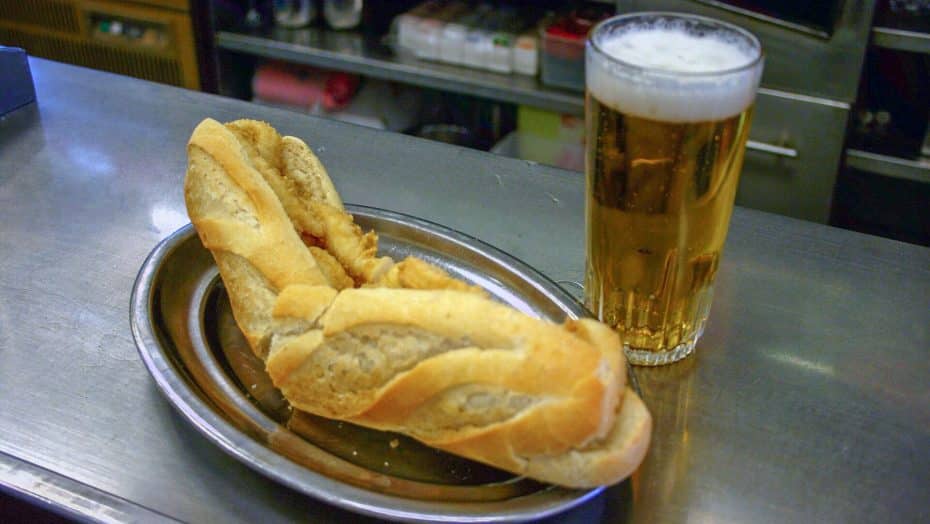
The city is home to renowned establishments like Restavrante Botín, the Guinness Book of World Records’ oldest operating restaurant. It has been serving traditional Castilian cuisine since 1725. Another must-visit is DiverXO, led by chef Dabiz Muñoz, who crafts avant-garde dishes that have earned the restaurant three Michelin stars.

Recent additions to Madrid’s dining scene include StreetXO, also under David Muñoz’s guidance. This restaurant offers playful street-food-inspired creations blending Asian and Spanish influences.
Dining in Madrid extends beyond famed restaurants. Every Madrid neighborhood pulses with lively tapas bars offering a casual dining atmosphere where locals gather to savor small plates paired with wine or beer. Neighborhoods like La Latina, Chueca, and Malasaña are particularly popular for their tapas.
Because of its status as a major transportation hub, traveling to Madrid is easy and convenient. Adolfo Suárez Madrid–Barajas Airport (MAD) links the city with numerous international destinations in Europe, Latin America, and the USA. Additionally, RENFE connects it to other parts of Spain via high-speed train services. Once in the city, an efficient public transport system comprising buses and metro makes exploration easy and accessible.
4. Oviedo
Oviedo, the proud titleholder of the Spanish Food Capital 2024, sits in northern Spain within the Asturias region. Known for its traditional Asturian cuisine, the city offers a culinary profile marked by hearty, rustic flavors driven by local ingredients such as beans, cider, and fish. Oviedo’s reputation stems from its dedication to preserving and elevating local dishes and a contemporary food scene that continuously evolves.
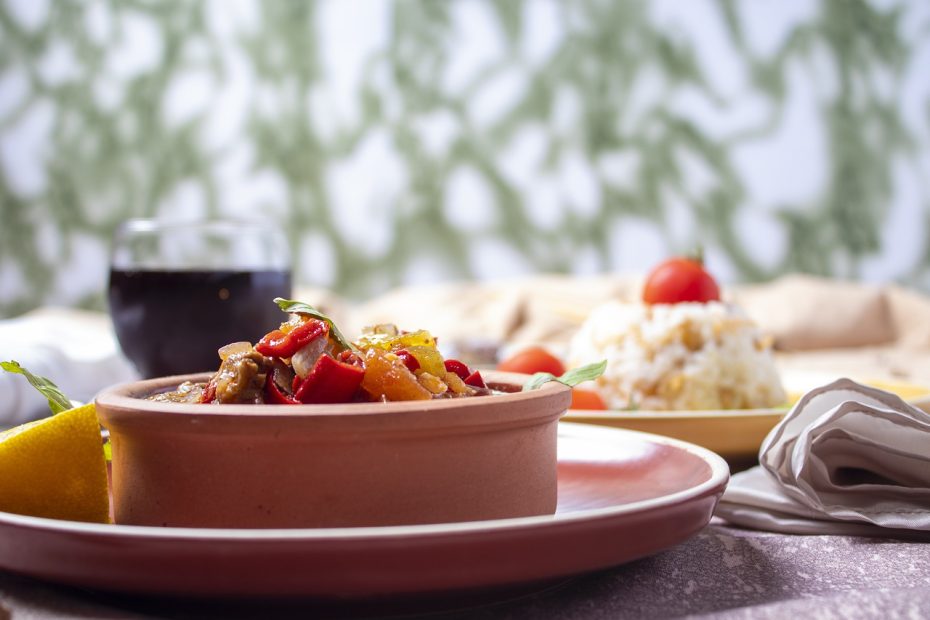
In recent years, Oviedo has gained attention with exciting additions to its culinary landscape. A standout is the Michelin-starred Casa Marcial, led by renowned Chef Nacho Manzano, known for innovating traditional recipes with modern techniques. Beyond this, the city’s dining experience extends to cozy sidrerías where cider is poured with characteristic flair.
Regional specialties like fabada asturiana — a rich bean stew with chorizo and morcilla — or cachopo — breaded veal stuffed with ham and cheese — are must-tries for those exploring Oviedo’s gastronomy. These dishes echo the comfort and tradition synonymous with Asturian food.
Oviedo boasts numerous acclaimed restaurants situated mainly in the old town area. Visitors can savor authentic flavors in celebrated institutions and local taverns. As part of ongoing developments, new farm-to-table concepts enrich the menu offerings and emphasize sustainable practices in sourcing.
Oviedo is convenient to get to; it lies approximately 40 kilometers from Asturias Airport. Efficient bus and train services connect it well to other cities, making it an accessible destination.
5. Barcelona
Another Spanish Food capital that we couldn’t leave out of this list. Barcelona is a gastronomic hub famous for its rich and diverse food culture.
Known as THE Catalonian culinary epicenter, Barcelona gained recognition for its emphasis on fresh seafood, traditional tapas, and cutting-edge culinary innovations. The city has a reputation as a Spanish food capital. It blends classic Catalan dishes and a modern gastronomy that continues to evolve.
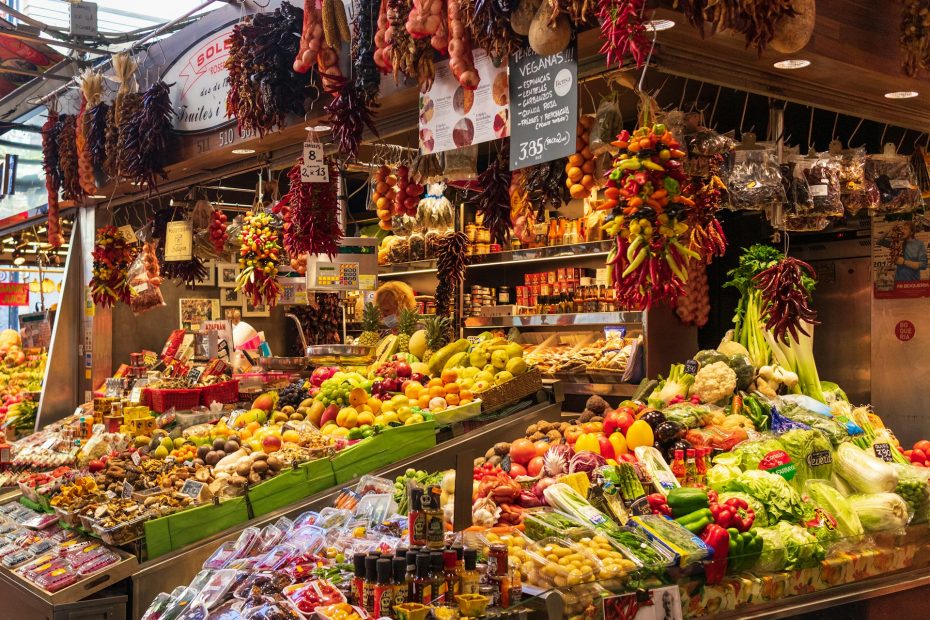
Barcelona’s culinary profile includes iconic dishes such as “pa amb tomàquet” (bread with tomato), “escudella i carn d’olla” (a traditional stew), and “fideuà” (a noodle-based dish similar to paella). Tapas are hugely popular here, with establishments offering specialties like “patates braves” and “bombes.” The Boqueria Market is a renowned spot where food lovers can experience local ingredients and flavors firsthand.
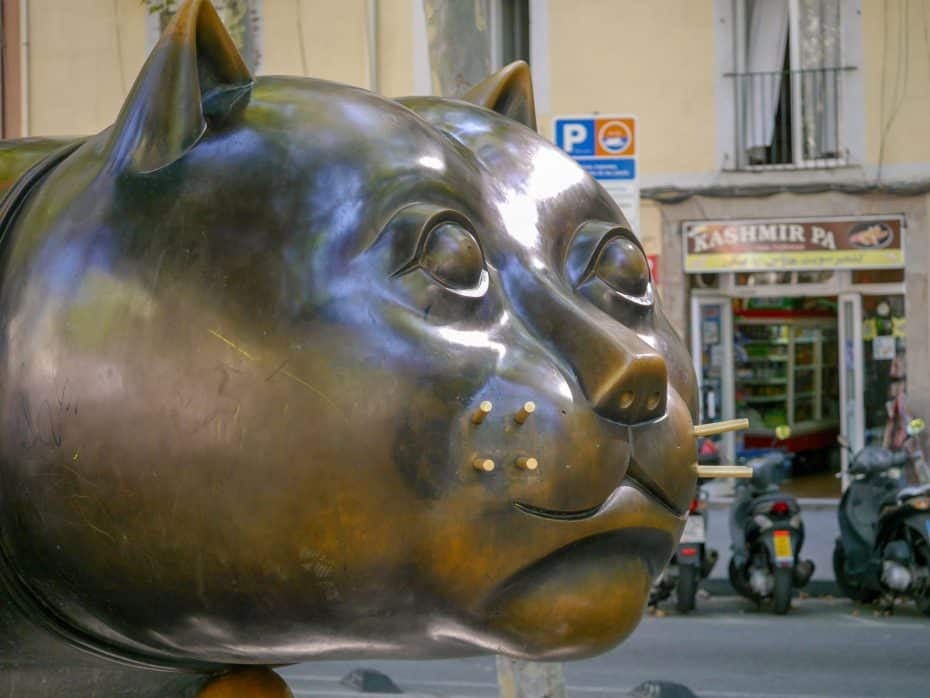
The city houses several Michelin-starred restaurants, such as Cinc Sentits and Disfrutar, praised for their innovative approach to Catalonian cuisine. Notable newcomers are continually adding to Barcelona’s thriving food scene, making it an exciting destination for culinary exploration. Beyond high-end dining, Barcelona offers an authentic eating experience in every corner. From bustling tapas bars in the Gothic Quarter to the modernist-inspired eateries in Eixample, you’ll find diverse flavors coupled with passionate culinary tradition.
Barcelona is accessible via El Prat International Airport, situated about 15 kilometers southwest of the city center. Regular high-speed train services also connect Barcelona to other major Spanish cities such as Madrid and Valencia.
6. Málaga
Málaga, on Spain’s Costa del Sol, is well-known for its diverse culinary scene. Its location in the Andalusian region contributes to its food profile, which is characterized by fresh seafood, quality olive oil, and sun-ripened produce. As a gastronomic hub in Spain, Málaga is recognized for combining traditional Andalusian recipes with modern culinary innovations.
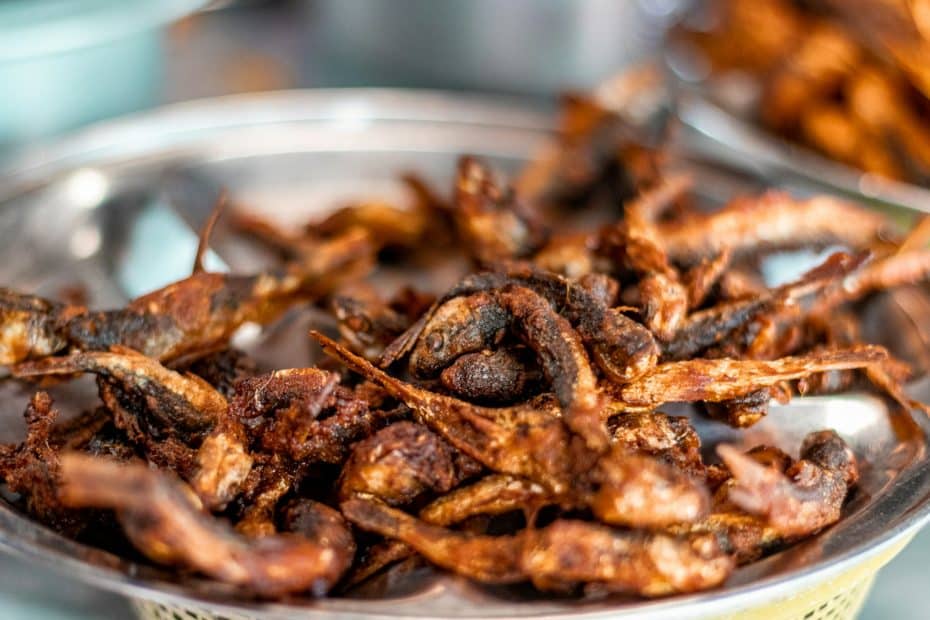
In recent years, the city has seen a dynamic shift in its food landscape. Chefs like Dani García have put Málaga on the culinary map with his acclaimed restaurant Bibo. Another noteworthy venue is Jose Carlos García, awarded one Michelin star, located at Muelle Uno. Diners can enjoy innovative dishes while overlooking the picturesque port.
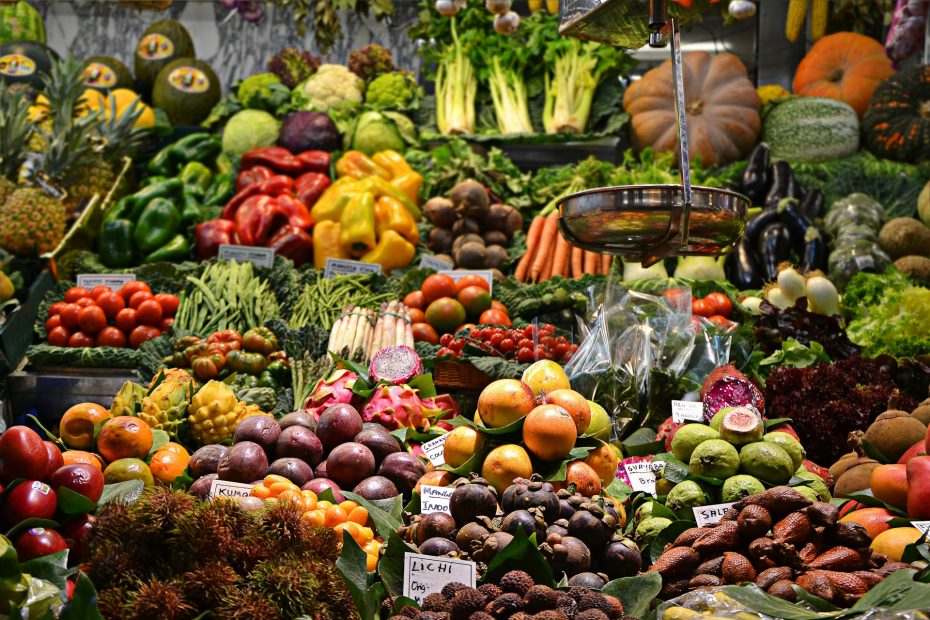
Local dishes include espetos de sardinas (grilled sardines skewered on bamboo), ajoblanco (a cold almond soup), and fritura Malagueña (a variety of fried fish). The Atarazanas Market is central to experiencing Málaga’s everyday food culture, where street food stalls sell these delicacies alongside fresh produce from local vendors.
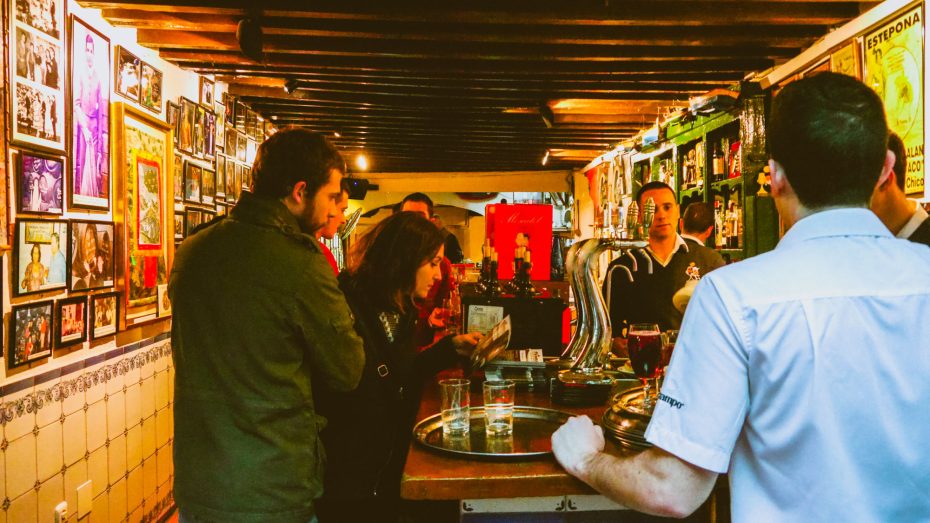
Eating in Málaga offers a relaxed atmosphere. Tapas bars are ubiquitous throughout neighborhoods like El Palo and La Merced. These areas often teem with smaller places offering authentic flavors without pretense. Expect to find both old-world charm at iconic restaurants such as El Pimpi and contemporary dining experiences at Restaurante Kaleja by chef Dani Carnero.
Málaga is easily accessible through Málaga-Costa del Sol Airport. The city is also connected by high-speed trains, which link it to major cities like Madrid and Barcelona, making it accessible for domestic travelers looking to explore this Spanish food capital.
7. Salou
Salou, a coastal town in the province of Tarragona, Catalonia, is recognized for its growing culinary scene, which reflects its Mediterranean roots. Positioned on the Costa Daurada, about 112 kilometers (70 miles) southwest of Barcelona, Salou enjoys proximity to bountiful agricultural areas and the sea, contributing to its impressive culinary offerings.
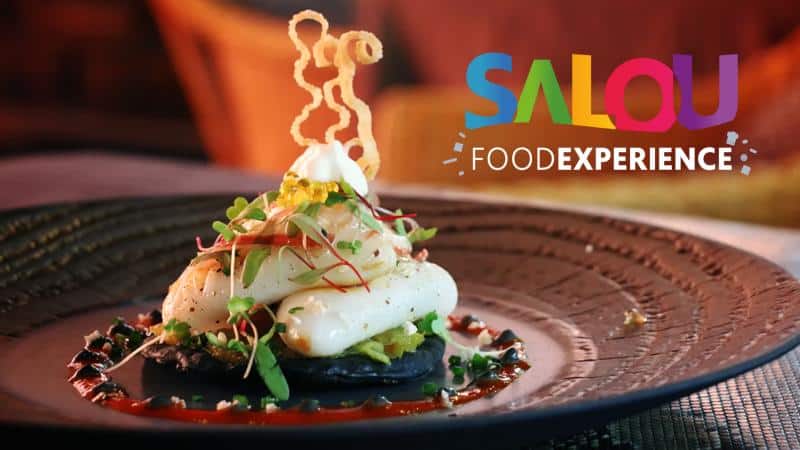
Salou’s culinary profile reflects its access to fresh seafood and local produce, which are staples in many traditional dishes. The city’s dining scene infuses local cuisine, which features flavors like olive oil, garlic, fresh herbs, and fresh seafood. This town has started gaining attention as a food destination due to its efforts to host festivals like Salou Food Experience, which promotes local gastronomy and focuses on authentic culinary experiences.
Among the specialties to try in Salou is the “suquet de peix,” a delicious fish stew. Restaurants also offer “fideuà,” a noodle dish similar to paella but with noodles instead of rice. There are celebrated establishments such as Restaurant La Goleta, which is well-regarded for seafood and traditional Catalan dishes. Additionally, various tapas bars spread throughout the town provide a casual dining experience popular with locals and visitors.
One notable recent addition is Deliranto, a restaurant awarded a Michelin star in 2019 for its avant-garde approach to local ingredients and flavors. Chef Pep Moreno’s innovative take on traditional dishes has captured the attention of food critics.
Eating in Salou ranges from casual tapas atmospheres to upscale dining experiences. The main restaurant area around Passeig Jaume I offers both seafront views and easy access to numerous dining options ranging from simple cafes to elegant marisquerías (seafood restaurants).
Travelers can reach Salou easily via Reus Airport, approximately 10 kilometers away. Regular train connections from major cities like Barcelona and Valencia also make it convenient for those touring Spain’s eastern coast to indulge in Salou’s emerging culinary landscape.
8. Cuenca
Cuenca is located in the autonomous community of Castilla-La Mancha in central Spain. It has gained recognition for its unique culinary profile, which carefully respects traditional methods. Notably awarded the title of Spanish Food Capital in 2023, Cuenca has seen a burgeoning food landscape with new restaurants and gastronomic events enhancing its reputation.
Famous local dishes include ‘Morteruelo‘, a type of pâté made with game meat and bread crumbs, often likened to a spread, and ‘Ajoarriero‘, a garlicky cod dish beloved in the region. For dessert, don’t miss ‘Alajú‘, a honey and almond cake that reflects the Moorish influence on the area’s cuisine.
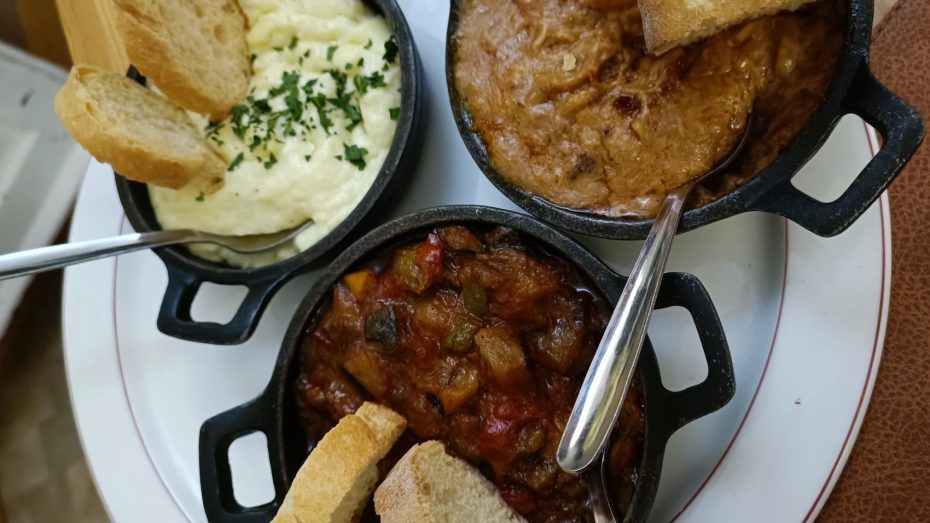
Among the city’s eateries, Casa Elías is known for its history of authentic service and traditional Castilian fare. Restaurante Trivio stands out as another excellent choice; it earned a Michelin star thanks to chef Jesús Segura’s innovative approach to merging regional ingredients with modern techniques.
In recent years, additions such as Restaurante Raff offer locals and visitors options that highlight fresh produce sourced from surrounding farms. Dining across Cuenca ranges from high-end culinary havens to smaller taverns where local chefs showcase their dedication to Spanish cuisine.
Reaching Cuenca is convenient. Regular trains run from Madrid, creating an accessible journey that lasts approximately one hour by high-speed AVE train.
9. Alicante
Located on the southeastern coast of the Valencian Community, Alicante is known as a thriving hub for gastronomy enthusiasts. Its culinary landscape reflects a strong Mediterranean influence, focusing on fresh seafood, vegetables, and rice dishes.
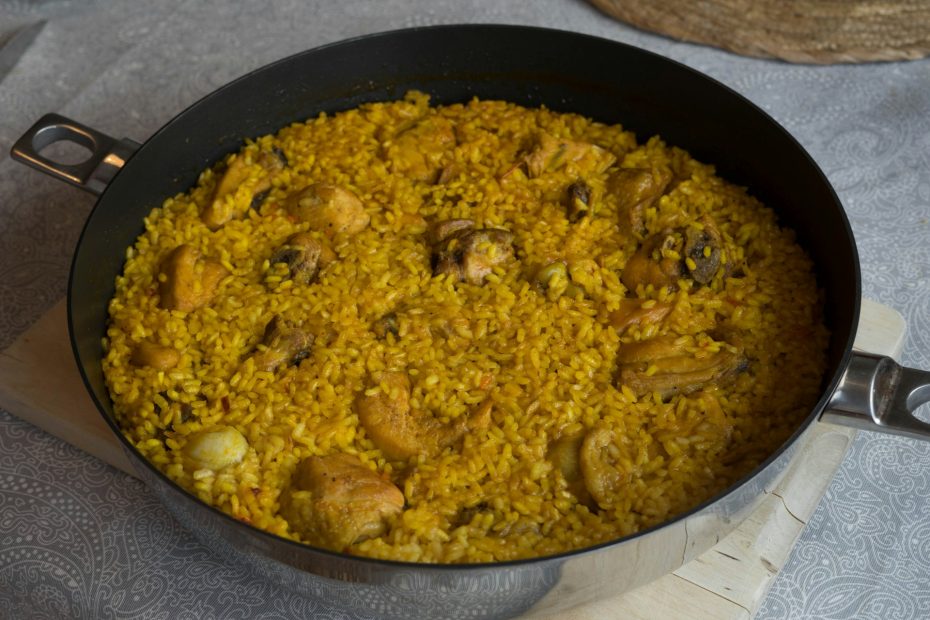
The city is celebrated for its signature dish, arroz a banda, a flavorful rice preparation with fish stock and saffron. Another local specialty is turrón, a nougat dessert traditionally consumed during the festive season.
Alicante is home to several renowned dining establishments. Among them is Monastrell, a Michelin-starred restaurant helmed by chef María José San Román. This eatery is famous for its innovative use of local ingredients. Nou Manolín offers a more informal dining experience but remains highly praised for its tapas menu. Recent additions have brought contemporary culinary techniques to the city’s traditional offerings.
Dining out in Alicante presents an opportunity to engage with the local way of life. The main gastronomic district stretches from Calle Mayor to Barrio Santa Cruz and down to Explanada de España. Here, restaurants range from small family-run spots to upscale eateries, offering an authentic taste of Alicante’s flavors.
Getting to Alicante is convenient with the Alicante-Elche Airport approximately 11 kilometers from the city center. It offers direct flights to numerous international destinations.
10. Ibiza
Ibiza, situated in the Balearic Islands off the eastern coast of Spain, is world-famous for its vibrant nightlife and distinctive culinary scene. The island’s cuisine reflects Mediterranean influences with an emphasis on fresh seafood, local produce, and traditional Spanish elements.
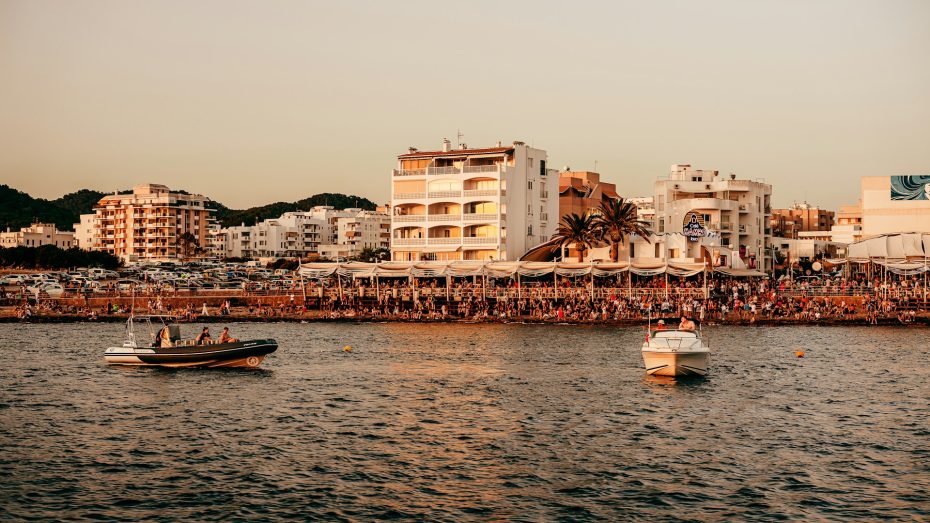
Ibiza’s culinary reputation has been growing steadily, making it a significant gastronomic destination in Spain. The city has been witnessing a burgeoning food scene, with new restaurants and bars enhancing its offerings annually. Traditional Ibicenco dishes like “Bullit de Peix” (a fish stew) and “Sofrit Pagès” (a meat dish with potatoes and vegetables) should be on any food lover’s list. “Flaó,” a local cheesecake flavored with mint and aniseed, offers a sweet end to any meal.
The island hosts several well-recognized establishments, such as the Michelin-starred Es Tragón, which brings innovative twists to local ingredients. Other notable restaurants include Can’Alfredo, famous for its authentic dishes, and Sa Nansa, known for its rice. The dining scene sees frequent new entrants, with chefs experimenting with fusion cuisine that captures the wild spirit of Ibiza. Eating out in Ibiza ranges from laid-back beachside chiringuitos serving fresh fish to high-end restaurants where presentation matches flavor (and price).
The main restaurant areas lie around Ibiza Town and Sant Antoni, where you can expect a mix of traditional tapas bars and contemporary culinary spots. The outdoor terraces are especially popular during warm evenings.
Reaching Ibiza is convenient via the Ibiza Airport (Aeroport d’Eivissa), which connects widely across Europe and mainland Spain year-round. Ferries from the mainland provide another option for reaching this gastronomically exciting island.



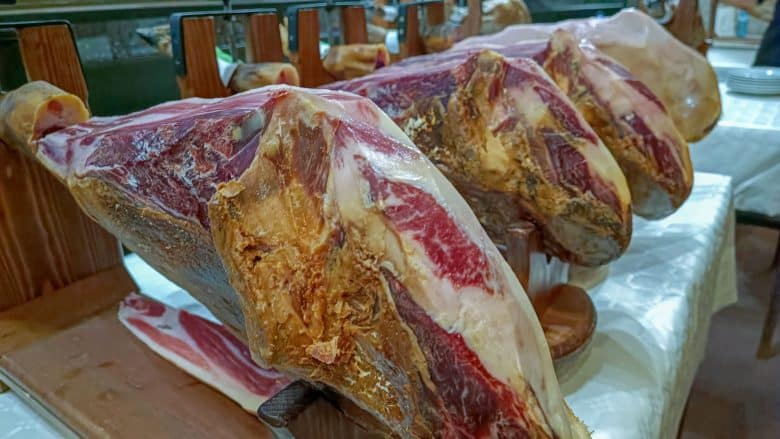
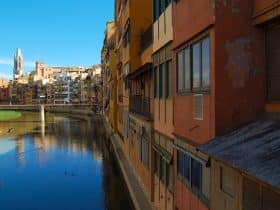







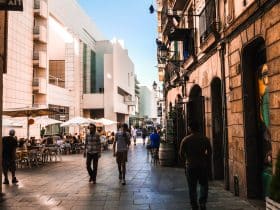




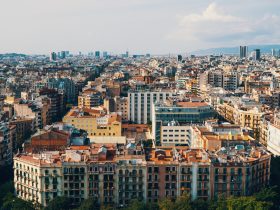



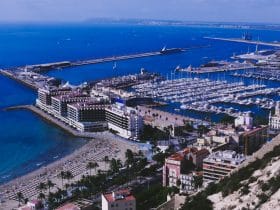






















Leave a Reply
View Comments